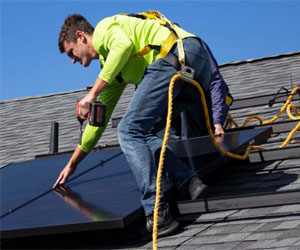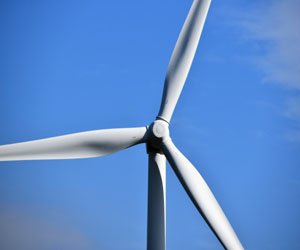


Building A Sustainable Future

Eco-friendly homes, also known as green or sustainable homes, have gained significant attention in recent years as the world grapples with environmental challenges and the need for responsible living. These homes represent a conscious effort to reduce the ecological footprint of residential buildings, making them more energy-efficient, environmentally responsible, and economically sound.
The core principle of eco-friendly homes is to minimize the negative impact on the environment while maximizing the use of renewable and sustainable resources. Here are some key elements of eco-friendly homes:
Energy Efficiency: Eco-friendly homes are designed to be highly energy-efficient. They often feature better insulation, energy-efficient windows and doors, and advanced heating and cooling systems. These features reduce energy consumption and lower utility bills.
Renewable Energy: Many eco-friendly homes incorporate renewable energy sources such as solar panels and wind turbines. These technologies harness clean, sustainable energy from the sun and wind, reducing dependence on fossil fuels.
Water Conservation: Sustainable homes often feature water-saving appliances and fixtures. Rainwater harvesting and greywater recycling systems are also utilized to reduce water consumption, which is especially important in regions facing water scarcity.
Use Of Sustainable Materials: The construction of eco-friendly homes emphasizes the use of sustainable and recyclable building materials. This includes materials like bamboo, reclaimed wood, recycled glass, and low-VOC (volatile organic compound) paints to improve indoor air quality.
Passive Design: Passive design principles make use of natural elements like sunlight, wind, and shade to control the temperature and lighting within a home. This reduces the need for artificial heating, cooling, and lighting.
Green Roofs And Walls: Eco-friendly homes may incorporate green roofs and walls with vegetation that improves insulation, air quality, and aesthetics. Green spaces on rooftops and walls contribute to reduced urban heat islands and improved biodiversity.
Waste Reduction: These homes prioritize waste reduction through practices like on-site composting and recycling. Design elements can also allow for deconstruction and recycling of materials when the home reaches the end of its life cycle.
Indoor Air Quality: Eco-friendly homes focus on creating a healthy living environment. Enhanced ventilation systems, non-toxic building materials, and air filtration systems are implemented to improve indoor air quality.
Sustainable Landscaping: The use of native plants, natural landscaping, and xeriscaping (water-efficient landscaping) reduces the need for irrigation and chemical fertilizers, promoting a more sustainable outdoor environment.
Smart Home Technology: Integration of smart home technology enhances energy efficiency and convenience. Residents can monitor and control energy use, security, and other systems via their smartphones and devices.
Eco-friendly homes are not just a trend but a necessity. The environmental benefits of these homes are clear, as they reduce greenhouse gas emissions, lower resource consumption, and conserve water. Moreover, eco-friendly homes often lead to reduced utility costs, making them economically appealing to homeowners in the long run.
As our world faces the urgent need to address climate change and environmental degradation, the adoption of eco-friendly homes is a positive step toward creating a more sustainable and responsible future. Whether through new construction or retrofitting existing homes, eco-friendly living is becoming an essential part of the global shift towards a greener and more sustainable way of life.
Illuminating Our Path To Sustainability
 Solar energy holds immense promise for the future for several compelling reasons:
Solar energy holds immense promise for the future for several compelling reasons:
Inexhaustible Resource: The sun, our ultimate energy source, is an almost inexhaustible and free resource. It continually emits an enormous amount of energy, more than humanity could ever consume.
Environmental Benefits: Solar power is one of the cleanest and most environmentally friendly energy sources available. It produces no greenhouse gas emissions, air pollution, or water usage, making it a key player in mitigating climate change.
Global Accessibility: Solar energy is accessible virtually everywhere on the planet. As long as there is sunlight, solar panels can be installed and harnessed, making it a democratic energy source.
Technological Advancements: Ongoing advancements in solar technology continue to drive down costs and improve efficiency, making it increasingly attractive and affordable for individuals, businesses, and governments.
Cultivating Wellness Through Nature
 Physical Exercise: Gardening is an excellent form of physical activity. Activities such as digging, planting, and weeding can provide a full-body workout, improving strength, flexibility, and cardiovascular health. Spending time outdoors in the fresh air and sunlight also promotes vitamin D synthesis and overall well-being.
Physical Exercise: Gardening is an excellent form of physical activity. Activities such as digging, planting, and weeding can provide a full-body workout, improving strength, flexibility, and cardiovascular health. Spending time outdoors in the fresh air and sunlight also promotes vitamin D synthesis and overall well-being.
Healthy Eating: Many gardeners grow their fruits and vegetables, which encourages a diet rich in fresh, organic produce. Homegrown fruits and vegetables are often more nutritious than store-bought alternatives, as they can be harvested at their peak ripeness and consumed immediately.
The Key To Vitality
 The Significance Of Nutrient Absorption
The Significance Of Nutrient Absorption
Nutrient absorption is the bridge between the food we eat and the nutrients our bodies need to function optimally. It is crucial for maintaining health, supporting growth, and providing energy for daily activities. Without effective nutrient absorption, the body would struggle to obtain the vital elements required for various bodily functions.
The Digestive System's Role
The process of nutrient absorption begins in the digestive system, where food is broken down into smaller molecules through mechanical and chemical digestion. The small intestine, in particular, plays a central role in nutrient absorption. Its walls are lined with tiny finger-like projections called villi, which are covered in even smaller hair-like structures known as microvilli. These structures increase the surface area available for nutrient absorption.
Types Of Nutrients Absorbed
Several types of nutrients are absorbed during digestion, including:
Carbohydrates: Simple sugars like glucose are absorbed directly into the bloodstream.
Revolutionizing Cleaning For A Sustainable Future
 3. Eco-Friendly Packaging
3. Eco-Friendly Packaging
Green cleaning isn't limited to the contents of the cleaning products but also extends to the packaging. Innovations in packaging include the use of recycled and biodegradable materials, as well as more efficient and space-saving packaging to reduce transportation costs and emissions.
4. Smart Cleaning Appliances
Smart cleaning appliances equipped with sensors and AI technology are making cleaning more efficient and eco-friendly. These devices can optimize cleaning routines, minimizing resource waste by adjusting water usage, detergents, and energy consumption based on the specific cleaning needs. For example, robotic vacuum cleaners can map out your home and clean only the areas that need attention, saving both time and energy.
5. Waterless Cleaning Technologies
Waterless cleaning innovations are revolutionizing the way we think about cleaning tasks that traditionally require large amounts of water. Dry steam cleaning, for example, uses superheated steam to clean and sanitize surfaces without the need for chemicals or excessive water usage. These methods are not only more environmentally friendly but also more efficient.
6. Sustainable Cleaning Pads
Innovative cleaning pads made from sustainable materials like bamboo or recycled fibers are not only effective at capturing dirt and dust but are also biodegradable. They offer a green alternative to disposable cleaning pads that contribute to waste and pollution.
7. Chemical-Free Electrolyzed Water Cleaners
Some cleaning appliances now generate electrolyzed water on the spot by passing an electric current through a mixture of water and salt. This creates a powerful, non-toxic cleaning solution that effectively sanitizes surfaces, eliminating the need for chemical cleaning agents.






Exploring Alternative Energy Sources
 Solar Power: Solar energy is one of the most widely recognized and accessible alternative energy sources. It harnesses the sun's energy through photovoltaic cells, converting sunlight into electricity. Solar panels are now a common sight on rooftops and in solar farms, offering a clean and renewable source of power. The technology has become increasingly affordable and efficient, making it a viable option for both residential and commercial use.
Solar Power: Solar energy is one of the most widely recognized and accessible alternative energy sources. It harnesses the sun's energy through photovoltaic cells, converting sunlight into electricity. Solar panels are now a common sight on rooftops and in solar farms, offering a clean and renewable source of power. The technology has become increasingly affordable and efficient, making it a viable option for both residential and commercial use.
Wind Energy: Wind power has also gained significant traction in the alternative energy landscape. Wind turbines convert the kinetic energy of moving air into electricity. Wind farms, often situated in open, windy areas, have become a prominent feature of many countries' energy grids. The scalability of wind power makes it a flexible and promising energy source.
Hydropower: Hydropower, generated from the energy of flowing water, has been a tried and true source of renewable energy for many years. Large dams and smaller hydroelectric plants generate electricity by harnessing the kinetic energy of water. While these projects can have significant environmental impacts, innovations in small-scale, low-impact hydropower systems are being explored.
Geothermal Energy: Geothermal power taps into the Earth's internal heat. It involves drilling wells to access hot water or steam reservoirs below the Earth's surface and using this thermal energy to generate electricity. Geothermal energy is a reliable source of baseload power and is considered highly sustainable.
The Looming Crisis
 Understanding Water Scarcity
Understanding Water Scarcity
Water scarcity is not simply a lack of water; it is a condition where the demand for water exceeds the available supply or when the quality of water is compromised to the point of being unusable. It is a complex issue with far-reaching consequences:
1. Impact On Human Health: In regions where access to safe drinking water is limited, water scarcity can lead to waterborne diseases, malnutrition, and reduced quality of life.
2. Agricultural Consequences: Agriculture is the largest consumer of water globally. Water scarcity can result in crop failure, food shortages, and reduced income for farmers.
3. Economic And Social Disparities: Vulnerable communities often bear the brunt of water scarcity, as they lack the resources to adapt or mitigate its effects.
Causes Of Water Scarcity
Water scarcity can be attributed to several key factors:
1. Population Growth: As the global population continues to increase, so does the demand for water, for consumption, agriculture, and industry.
2. Climate Change: Altered precipitation patterns, increased temperatures, and changing weather patterns affect the availability of freshwater resources.